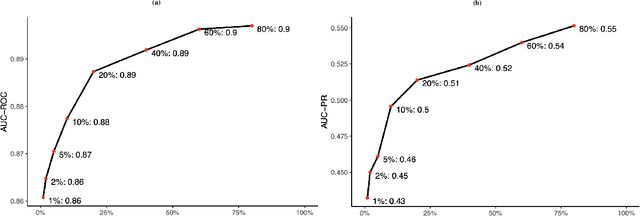Le Bao
Automating Document Classification with Distant Supervision to Increase the Efficiency of Systematic Reviews
Dec 09, 2020


Abstract:Objective: Systematic reviews of scholarly documents often provide complete and exhaustive summaries of literature relevant to a research question. However, well-done systematic reviews are expensive, time-demanding, and labor-intensive. Here, we propose an automatic document classification approach to significantly reduce the effort in reviewing documents. Methods: We first describe a manual document classification procedure that is used to curate a pertinent training dataset and then propose three classifiers: a keyword-guided method, a cluster analysis-based refined method, and a random forest approach that utilizes a large set of feature tokens. As an example, this approach is used to identify documents studying female sex workers that are assumed to contain content relevant to either HIV or violence. We compare the performance of the three classifiers by cross-validation and conduct a sensitivity analysis on the portion of data utilized in training the model. Results: The random forest approach provides the highest area under the curve (AUC) for both receiver operating characteristic (ROC) and precision/recall (PR). Analyses of precision and recall suggest that random forest could facilitate manually reviewing 20\% of the articles while containing 80\% of the relevant cases. Finally, we found a good classifier could be obtained by using a relatively small training sample size. Conclusions: In sum, the automated procedure of document classification presented here could improve both the precision and efficiency of systematic reviews, as well as facilitating live reviews, where reviews are updated regularly.
Approximate Cross-validated Mean Estimates for Bayesian Hierarchical Regression Models
Nov 29, 2020



Abstract:We introduce a novel procedure for obtaining cross-validated predictive estimates for Bayesian hierarchical regression models (BHRMs). Bayesian hierarchical models are popular for their ability to model complex dependence structures and provide probabilistic uncertainty estimates, but can be computationally expensive to run. Cross-validation (CV) is therefore not a common practice to evaluate the predictive performance of BHRMs. Our method circumvents the need to re-run computationally costly estimation methods for each cross-validation fold and makes CV more feasible for large BHRMs. By conditioning on the variance-covariance parameters, we shift the CV problem from probability-based sampling to a simple and familiar optimization problem. In many cases, this produces estimates which are equivalent to full CV. We provide theoretical results and demonstrate its efficacy on publicly available data and in simulations.
Estimation and Clustering with Infinite Rankings
Jun 13, 2012



Abstract:This paper presents a natural extension of stagewise ranking to the the case of infinitely many items. We introduce the infinite generalized Mallows model (IGM), describe its properties and give procedures to estimate it from data. For estimation of multimodal distributions we introduce the Exponential-Blurring-Mean-Shift nonparametric clustering algorithm. The experiments highlight the properties of the new model and demonstrate that infinite models can be simple, elegant and practical.
 Add to Chrome
Add to Chrome Add to Firefox
Add to Firefox Add to Edge
Add to Edge